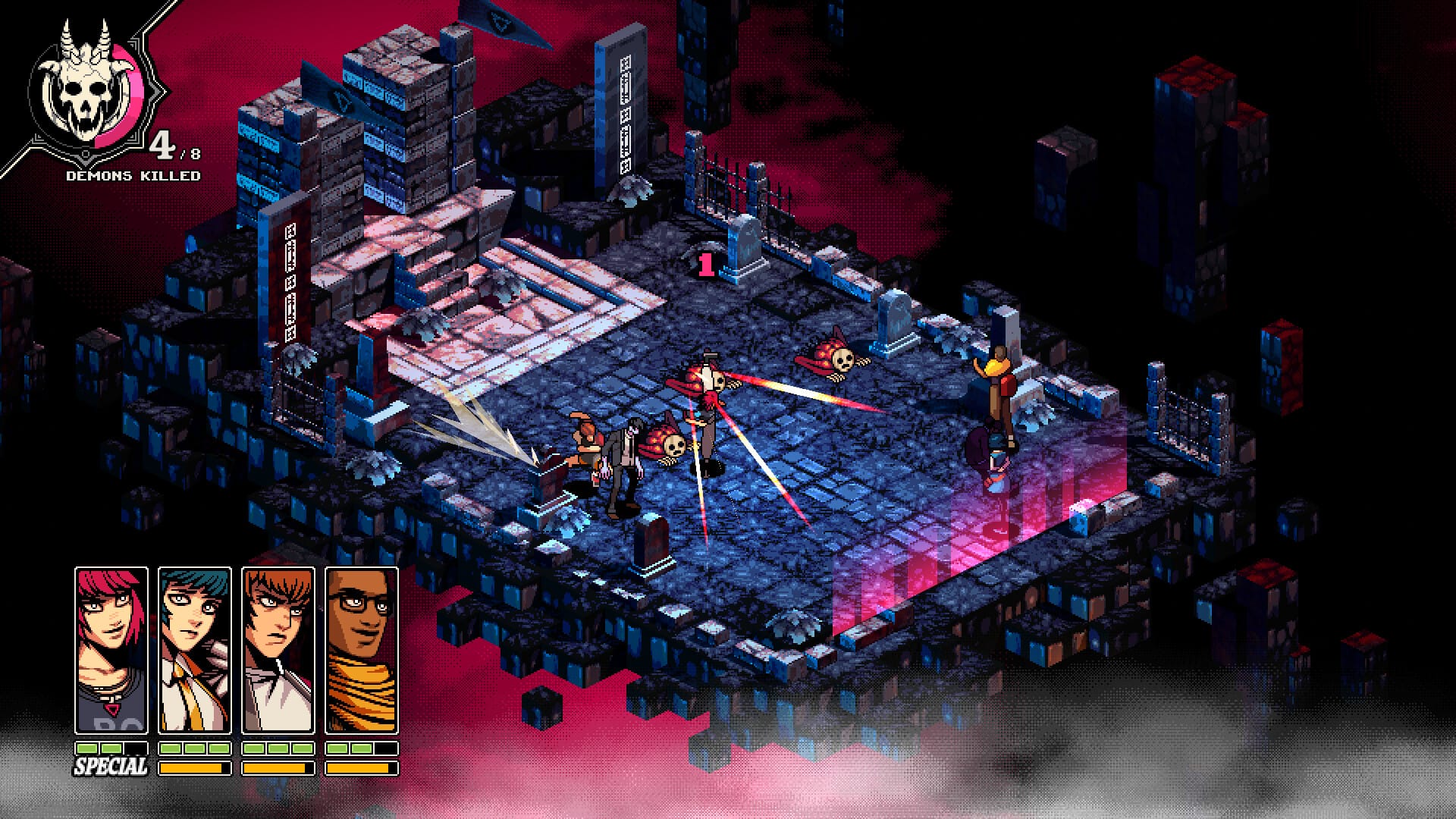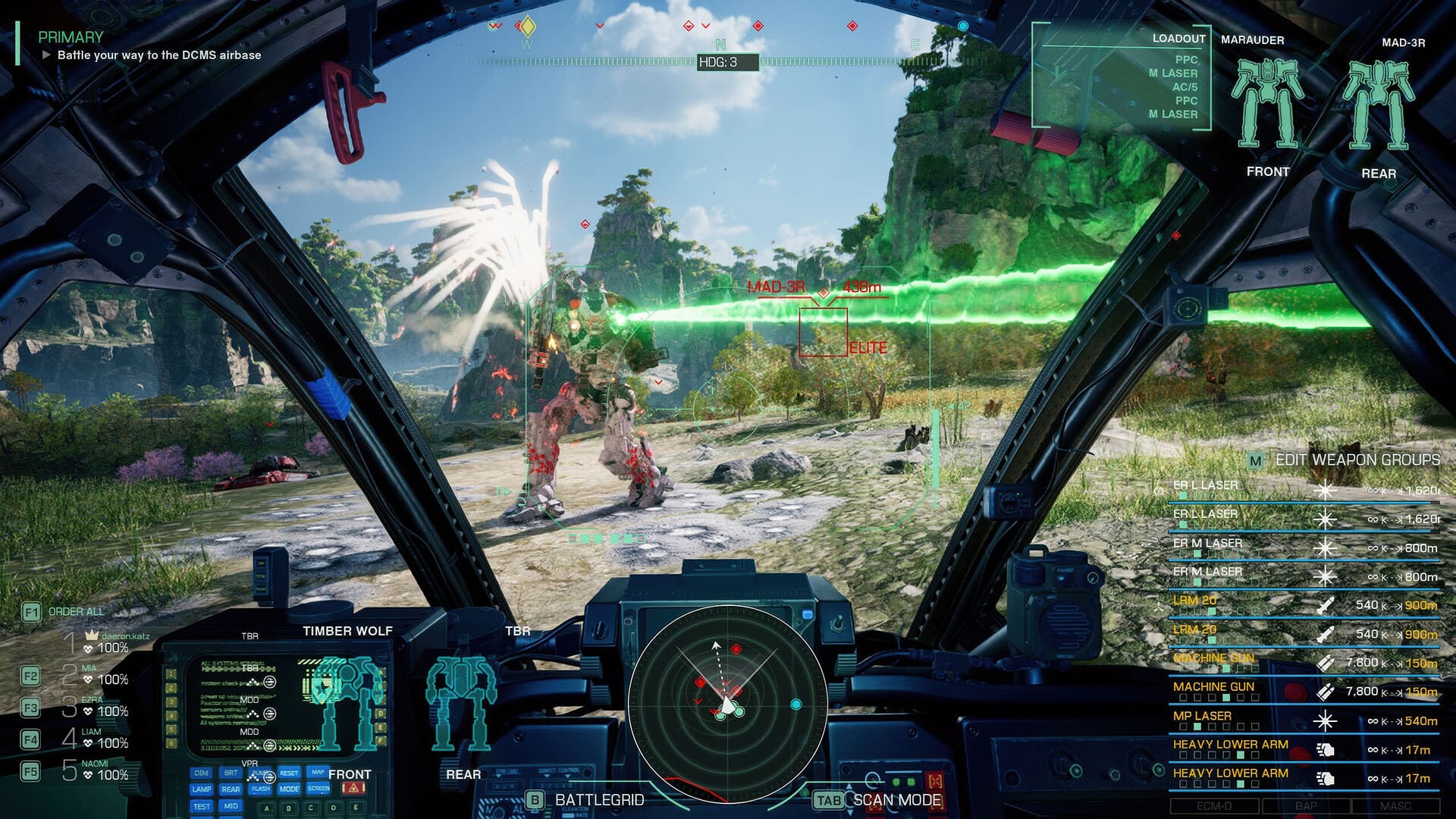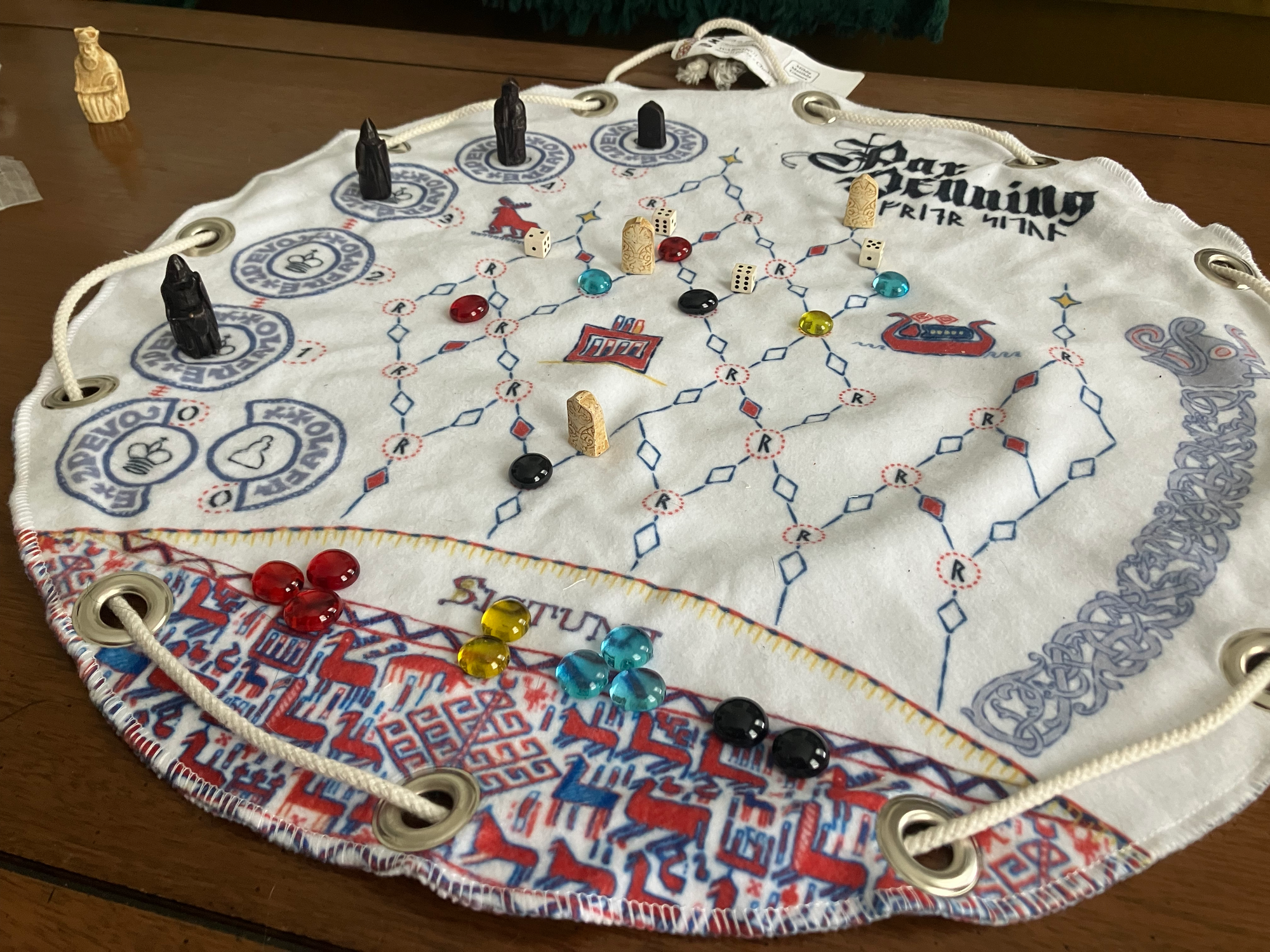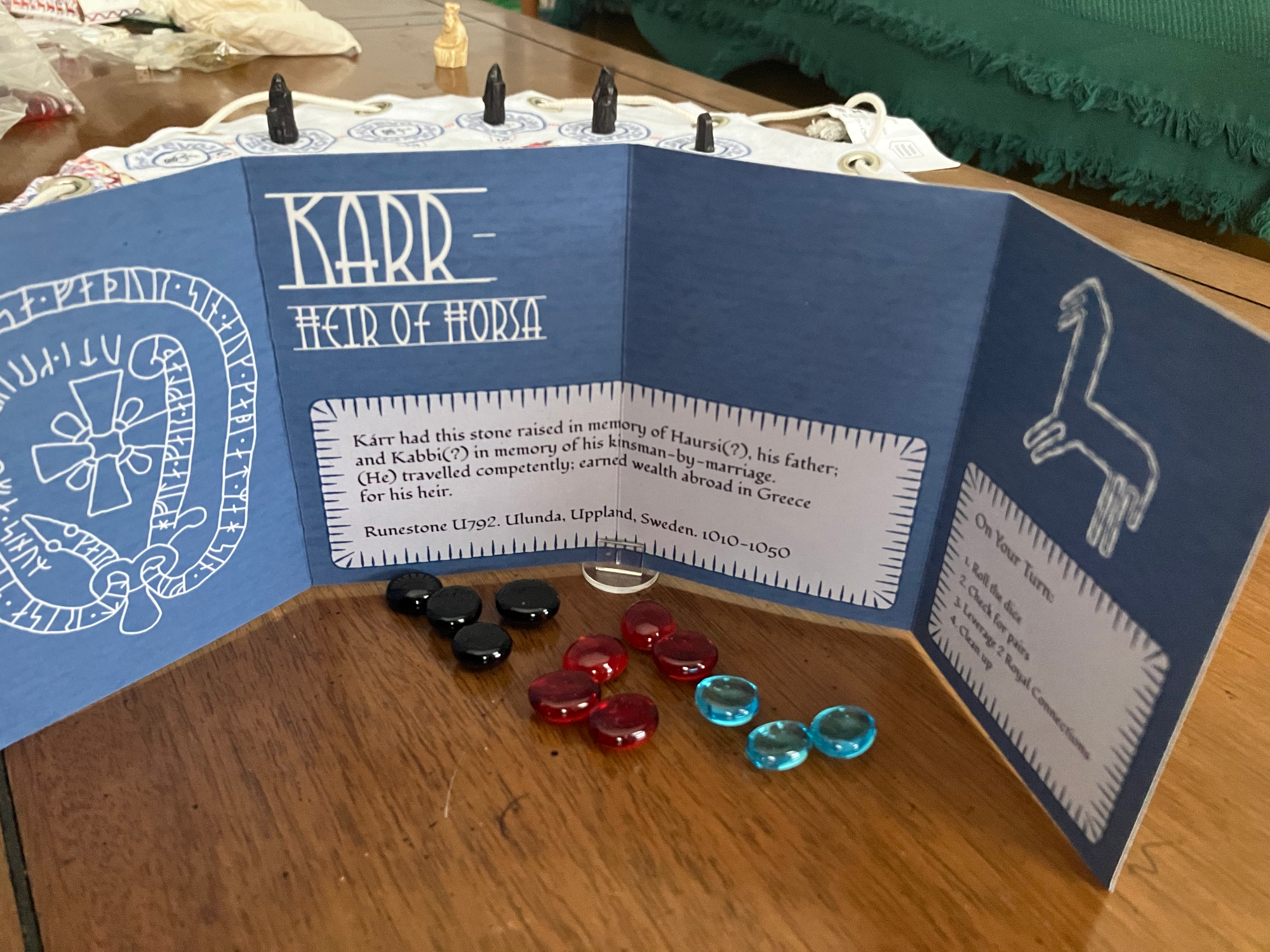Remember when you’d walk into a local music, book, or video store and there’d be an adorable section where the employees would recommend what they were interested in that month?
Welcome to our little version of it, called Remap Recommends.
It's a chance for the staff at Remap to let you know what they've been playing, reading, listening to, or watching.
Patrick Recommends: Demonschool

I grew up on JRPGs. Besides not having time for a 100-hour game, it's never made a ton of sense to me why the Persona series has never clicked for me. I was at Giant Bomb for years, damnit, and never made Persona 4 work. Years later, I tried a dozen or so hours of Persona 5, but beyond appreciating how slick it looked, I fell off pretty quickly. I can try and hand-wave the issue away by saying "well, I'm not that interested in the high school setting," which is true! But I'm also not a fantasy guy and I spent 150+ hours in Skyrim. Sometimes, it only takes one game to make you go "oh, okay," even if it ends up being an exception to the rule. I think it's possible Demonschool ends up being the exception to the rule here on the Persona question, because the 15ish minutes I played at PAX East was so goddamn good.
Thing is, a Persona 5 demo at PAX East would've worked on me, too! So it's hard to say whether Demonschool will manage to keep its hooks in me when it finally arrives later this year. But I dug the writing, the look, the combat—the whole deal. It's a game with a big and bold personality. It airs a confidence that grabbed me.
(I'm also a fan of any turn-based game that lets you play out an entire turn in advance, tweaking and re-working how it'll play out, before it actually unfolds.)
Fortunately, you can judge this all for yourself. There's a demo on Steam now.
Rob Recommends: MechWarrior 5: Clans

Patrick and I spend a lot of time writing stuff to each other that amounts to, "Hey, do you miss THE NINETIES? Do you ever feel like it would be cool to BE YOUNG?"
MechWarrior 5: Clans is very close to being a perfect 90s / early 2000s mech game... with some of the same charming quirks as well. It's deeply invested in its narrative and the lore of the BattleTech universe and seems to trust that if you're playing a mech game in the 2020s, you don't need to be told what the Inner Sphere is or what the Draconis Combine's whole deal is. Every mission is preceded by a lengthy briefing packed with over-wrought (though not necessarily bad) acting. Cutscenes abound as your squad of beautiful Smoke Jaguar test tube babies speak in the stilted vernacular of their hyper-militarized culture and slowly creep up on the idea that maybe invading lands your ancestors left centuries ago is not actually that laudable or advisable.
And then you go into the mech bay to do what's always been at the heart of the MechWarrior games: fine-tuning your loadouts until you have the exact combination of range, firepower, and capacity as you want. Next thing you know, you're putting your theories into practice while a radio play unfolds over squad comms.
You know what? This stuff is still awesome. It's an efficient and entertaining format for a military sci-fi video game, perfected in the 90s and basically unsurpassed today. Chris Roberts can spend his life trying to make Privateer into the metaverse with Star Citizen but the truth is all we needed was good cockpit art, cool laser sounds, and cutscenes about emo badasses making friends and being sad. MechWarrior 5 understands the assignment.
Chia Recommends: Pax Penning

It should come as no surprise that I’m a sucker for aesthetic objects. So much of my love for certain games, both video and board varieties, comes from how well integrated and considered their visual aesthetics are. Back in 2024, Pax Penning caught my eye instantly, from its cloth board that serves as the game’s container to the brightly colored beads and medieval style chess pieces, this game is particularly stunning to me.
And yet, I wasn’t sure it was for me. When I first watched a group of experienced players play the game on a stream, the rules felt difficult to follow, and perhaps a bit too abstracted from the physical components for my tastes. After reading various people citing other games I’ve enjoyed (Pax Pamir for instance) as touchstones, and realizing that the game’s designer Matilda Simmonson was hand making each board herself, I bought a copy if nothing else than to have a beautiful handmade object from an independent creator.

Finally, almost a year after I first purchased the game, I had a chance to play Pax Penning serendipitously, and I now regret not getting it to the table sooner. What at first seemed like an overly abstract game about the first Christian king of Sweden quickly snapped into place as a game focused on political influence and shifting alliances with some surprisingly sharp edges in a snappy package.
You play as a chieftain during the early 11th century in Sweden. The new king is looking for the support of local people to recognize him as king of Sweden, and has minted new coins (the game’s titular Pennings) from silver to spread word of his influence and power. As a chieftain you have to decide, will you throw your influence behind the would-be king or stake your claim to your own lands?
Every player starts the game with a small screen behind which you have beads of your clan's specific color. These colorful glass beads both represent your influence on the world and the old currency of Viking era Sweden. That dual use feels like a particularly apt example of this game’s wonderful integration of aesthetic, physical components, and theme.When the game ends and one player is declared the winner, they must lift up their screen and show what beads they’ve accumulated over the course of the game, if any other player’s beads outnumber their own, then that player is the true winner.

The fact that you both need beads in order to be able to do more actions but you also want to give other players your beads in order to steal their win makes for a wonderfully tense balancing act. This tension is made even more juicy by the fact that you can always freely use your beads on the board to take more actions, but you can also purposefully ask for other player’s beads to be able to take more actions as well.
Early game people were generous, spreading influence and forming temporary alliances to try and create a favorable flow of influence, but once a few rounds had passed and the imbalance of beads behind their screen became more stark, the collaboration started to dry up. People calling in on past favors were met with weariness and plans were being constantly foiled as the balance of control within each player’s clan grew more and more perilous.

It’s a wonderful little game, both quick to play and a real brain-burner as you try your best to thread the needle on winning or helping someone else win in the hopes you can influence their house enough to steal their victory. Alongside the wonderful rulebook that includes a thematic and historical entry for each rule to further tie together the mechanics and theme, it’s a must play for anyone who likes political games where making trades with other players and forming shaky alliances are the best ways to win, and it looks good as hell while doing it.
